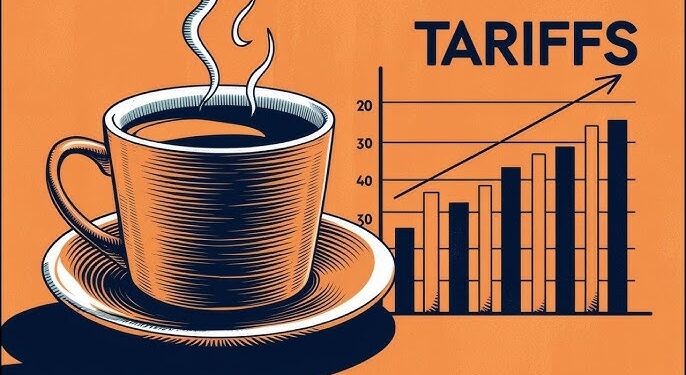On July 10, 2025, US President Donald Trump announced a 50% import tariff on all goods from Brazil — the world’s largest coffee exporter. The move sent shockwaves through the global coffee industry, including Vietnam, which ranks as one of the leading suppliers of green coffee beans to international markets.
Targeting Brazil: The New Tariff Policy
The new tariff will take effect on August 1, 2025. Brazil currently accounts for about 30% of US green coffee bean imports, totaling nearly $2 billion USD in trade during 2024. Most of these imports are unroasted green coffee beans, a key raw material for the US coffee roasting industry.
By imposing high tariffs on green beans, the US government has triggered significant concern among American roasters and distributors, many of whom rely heavily on Brazilian coffee.

Coffee Prices Likely to Spike in the US
Following the announcement, US green coffee bean prices rose by 3.5% and are expected to continue climbing in the coming months. American consumers — accustomed to stable coffee prices — could soon face noticeably higher costs for their daily cup.
Major US coffee associations are actively lobbying for exemptions on coffee imports, though the Trump administration appears steadfast in using tariffs as a strategic trade weapon.
Vietnam and Other Origin Countries Also Affected
The ripple effects of the tariff extend beyond Brazil. According to Royal Coffee, other coffee-producing nations such as Vietnam, Indonesia, India, and Nicaragua are now subject to elevated US import tariffs:
| Country | Coffee Tariff Rate | Notes |
|---|---|---|
| Indonesia | 32% | Applies to green coffee beans |
| Vietnam | 20% | Mostly Robusta exports |
| India | 27% | Pending formal confirmation |
| Nicaragua | 19% | Preliminary industry estimate |
These rates are applied to the FOB value at origin ports and represent import duties paid by US businesses, not taxes imposed by the exporting countries.
Vietnam — the world’s second-largest coffee exporter — now faces direct economic pressure. Although Vietnam primarily exports Robusta, and Brazil specializes in Arabica, rising prices from Brazil could lead to wider market disruptions affecting all origins.
Green Coffee Beans at the Center of Trade Tensions
Green coffee beans, which have not yet been roasted, are the standard format for international trade. These beans are typically processed in destination markets to suit local tastes — especially in the US.
As a result, heavy tariffs on green coffee imports raise input costs across the supply chain, from roasters to retail distributors, ultimately driving up end-user prices and eroding profit margins.
Limited Substitution Options for US Buyers
While the US may seek alternative sources such as Vietnam or Colombia, the newly expanded tariff regime makes short-term substitution ineffective.
With most major suppliers now covered by elevated tariffs, American coffee businesses face constrained supply chains, increasing the risk of industry-wide inflation and potential consumer backlash.
Global Implications: A Strategic Pivot for Vietnam?
Amid challenges, Vietnam could view this tariff storm as an opportunity to implement strategic reforms. With the US becoming a more complex export destination, Vietnamese coffee producers may consider investing in value-added processing, such as roasted or specialty coffee, rather than relying solely on raw green bean exports.
Moreover, Vietnam has a window to diversify export markets, reducing dependence on the US and exploring trade partnerships in Asia, Europe, and the Middle East.
Conclusion: The Consumer Pays — And Producers Must Adapt
The new tariff policy not only threatens coffee affordability in the US, but also signals a structural shift in the global coffee economy. Exporting countries like Vietnam will need to rethink supply chain strategies and boost resilience by investing in advanced processing and broader market access.
Meanwhile, American consumers may soon experience how a cup of coffee can become a mirror of geopolitics — with every sip steeped in international trade dynamics.
Source:








